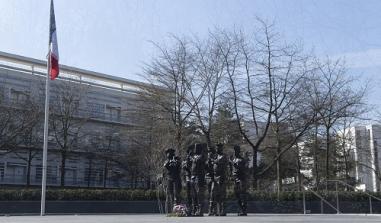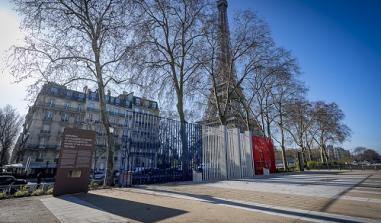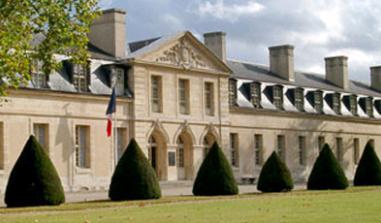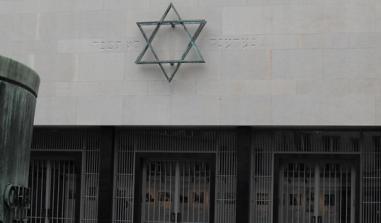Pentemont Abbey

Pentemont Abbey. © SGA/DMPA - J. Robert
From the 17th century to the present day, this abbey has enjoyed a rich and eventful history. It is currently home to Ministry of Defence departments.
From the 17th century to the present day, this abbey has enjoyed a rich and eventful history. It is currently home to Ministry of Defence departments. History Pentemont Abbey was founded in 1217 at Beauvais, by Philippe de Dreux. Transferred to Paris in 1672, at the wishes of King Louis XIV, the Abbey then settled in the former buildings of the Order of the Word Incarnate; on the site of what is now 104 rue de Grenelle. In 1745, Abbess Marie-Catherine Béthisy de Mézières entrusted the reconstruction of the Abbey to Constant d'Ivry, architect to the Duc d'Orléans and known for his work on the Palais-Royal. The buildings were completed in 1783, but a lack of finance prevented their decoration. Later, in 1835, the building of the extension to rue de Bellechasse meant the demolition of part of the buildings. Up until the Revolution, Pentemont Abbey served as a convent for nuns, as well as an educational establishment for the daughters of nobility. Some apartments were also reserved for ladies of good standing seeking rest. This was the case when Joséphine de Beauharnais stayed here, while the case of her separation from her husband was heard.
After the Revolution, the building was used for military purposes. The abbey buildings housed the National Guard, then the Imperial Guard under the First Empire, before becoming the barracks for the Cent Gardes under the Second Empire. In 1915, Pentemont Abbey was put at the disposal of the Pensions Department of the Ministry of War, which became the Ministry of War Pensions, Bonuses and Benefits in 1920. The building still houses Ministry of Defence departments to this day. Main courtyard The buildings to the left and at the far end of the main courtyard were built in the 19th century, for military purposes. Today they house Ministry of Defence departments. The building on the right, from the 17th century, was the main building of Pentemont Abbey. The first-floor windows at the centre of the facade, used to open into the Abbess's salon. The monumental entrance on the ground floor, which used to lead directly to the Abbey chapel, was converted into the grand salon between the wars.
War memorial and commemorative plaques The war memorial bears the inscription "From veterans to their comrades who gave their lives for their country. In memoriam". It is accompanied by a stele, dedicated to Ministry of Veterans' staff and the victims of war who died for France. Four commemorative plaques to députés and Veterans' Ministers (André Maginot, Robert Lasalle, Albert Aubry and Henri Frenay) are mounted on the building at the far end of the courtyard. There is also a plaque to the victims of the attack on the UTA DC 10 on 19th September 1989. This site is closed to the public, except on heritage days. This historical monument, under the administration of the Ministry for Defence, is part of a Defence Culture protocol, signed on 17th September 2005. Click here to see the list of other buildings included ...
Ministère de la défense Secrétariat Général pour l'Administration Direction de la Mémoire, du Patrimoine et des Archives Bureau des actions culturelles et muséographiques 14 rue Saint-Dominique 00450 Armées E-mail: [email=dmpa-sdace-bacm@sga.defense.gouv.fr]dmpa-sdace-bacm@sga.defense.gouv.fr[/email

Vue panoramique de l'abbaye de Pentemont. Source : SGA/DMPA - JP le Padellec
Practical information
37 rue de Bellechasse 75007
Paris
Ce site n'est pas ouvert au public, sauf à l'occasion des Journées du patrimoine.







